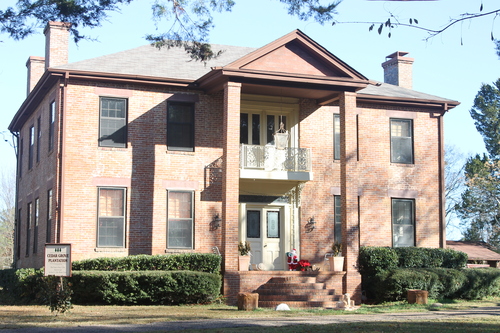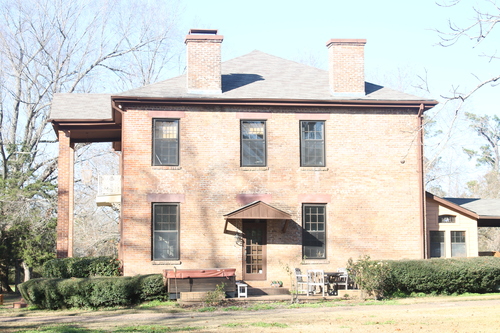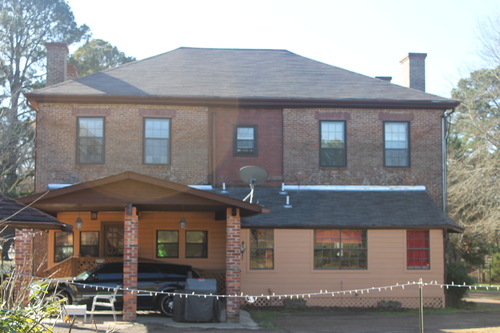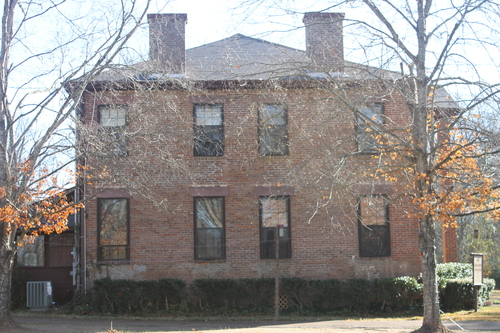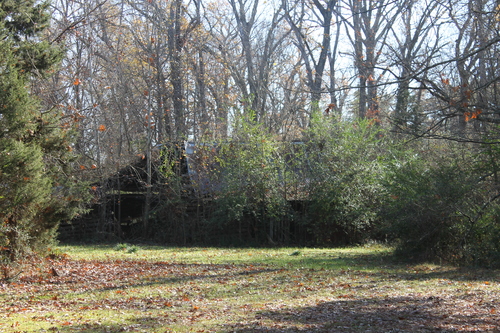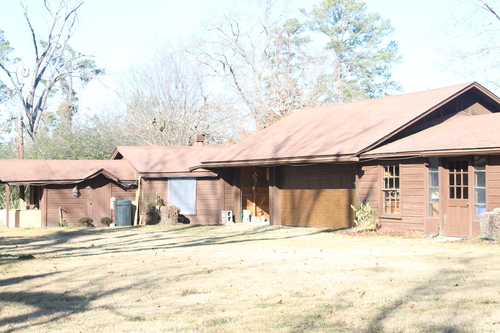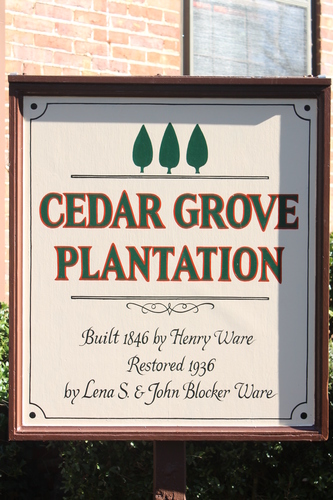2525 Blocker Rd., Marshall
Current Owner 2013: Laura Shurtleff
TX Historical Marker
The Henry Ware House became a TX Historical Landmark in 1969.Architectural Survey
• Description: The 1853 Henry Ware home is a two-story brick Greek Revival structure that was once part of a sprawling plantation of six hundred and forty acres. The home is a four-square floor plan with a hipped roof and double hung windows on both stories. A small porch with a gabled roof overlooks the main double-door entrance and is supported by two brick piers. The second story contains a small balcony that leads out of the second floor double door entrance. The primary entrance contains a transom and sidelights.
• Significance: The Henry Ware Plantation was part of Harrison County's most diversified plantations which not only produced large cotton and wheat crops, but included a dairy farm, and a textile mill and tannery that produced blankets, shoes, and clothing.
Historical Background
Henry and his wife Martha moved from Alabama to Texas in 1846 with their children and slaves. According to research done by Carol Morris Little, a local historian, the Wares purchased six hundred and forty acres in Harrison County from W.R. D. and Henrietta Ward in 1847. Originally named Cedar Grove, the house was not completed until 1852. By 1853, Henry Ware was one of the leading cotton planters in Harrison County and was the first to erect a steel screw cotton press in the state. He also grew large crops of cultivated wheat and was responsible for bringing some of the first grain reapers to East Texas. Ware was not only a successful planter, but was also an inventor, agriculturist, preacher, manufacturer, unionist and prohibitionist. He was a skilled blacksmith as well, and forged many new tools and plows which were more efficient and produced better crops. Always willing and eager to enhance his wealth through efficient means, he began cleaning and grinding his grain on his plantation by 1858 and marketing it for sell. Soon thereafter, he became the largest wheat manufacturer in the county. As if Ware did not maintain enough interests, he also built a steam powered textile mill and tannery on his plantation that produced 1,700 pairs of shoes in 1859, which was advertised in the Texas Republican and reported in the 1860 census.
Before the Civil War erupted Cedar Grove contained a school house, a cotton gin, brick kiln, milk house, factory sheds, barns, slave cabins, and an overseer's cottage. Although Ware opposed secession, according to family documents found in the archives, his plantation produced supplies for the Confederate Army's troops who were stationed within Harrison County. The editor for the Texas Republic, R.W. Loughery strongly disapproved of Ware's stand against the Civil War, and made his point in several comments in the paper…their hostile relationship continued until the end of the war.
In 1866 the Wares moved to Mississippi, leaving Cedar Grove to their daughter, France Ware Blocker. Ownership of the home has been kept within the Ware family's descendents although the house has been left vacant for many long stretches at a time. The owner as of 2013, Constance Ware is the great, great granddaughter of Henry Ware, and has been responsible for maintaining the home's architectural integrity.
